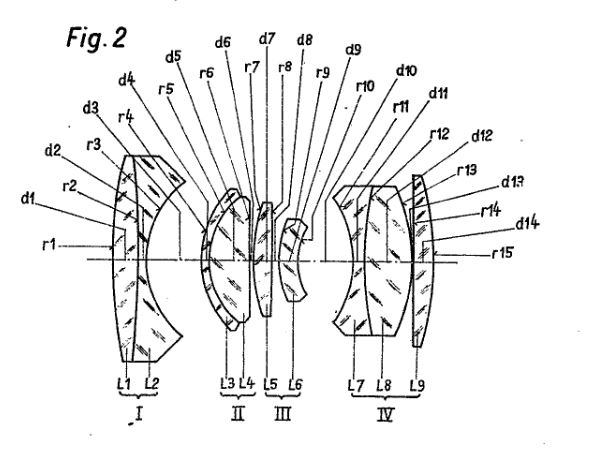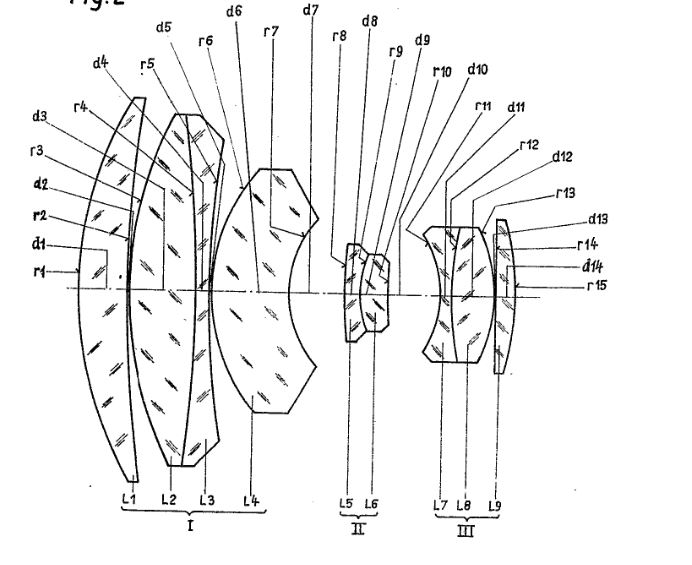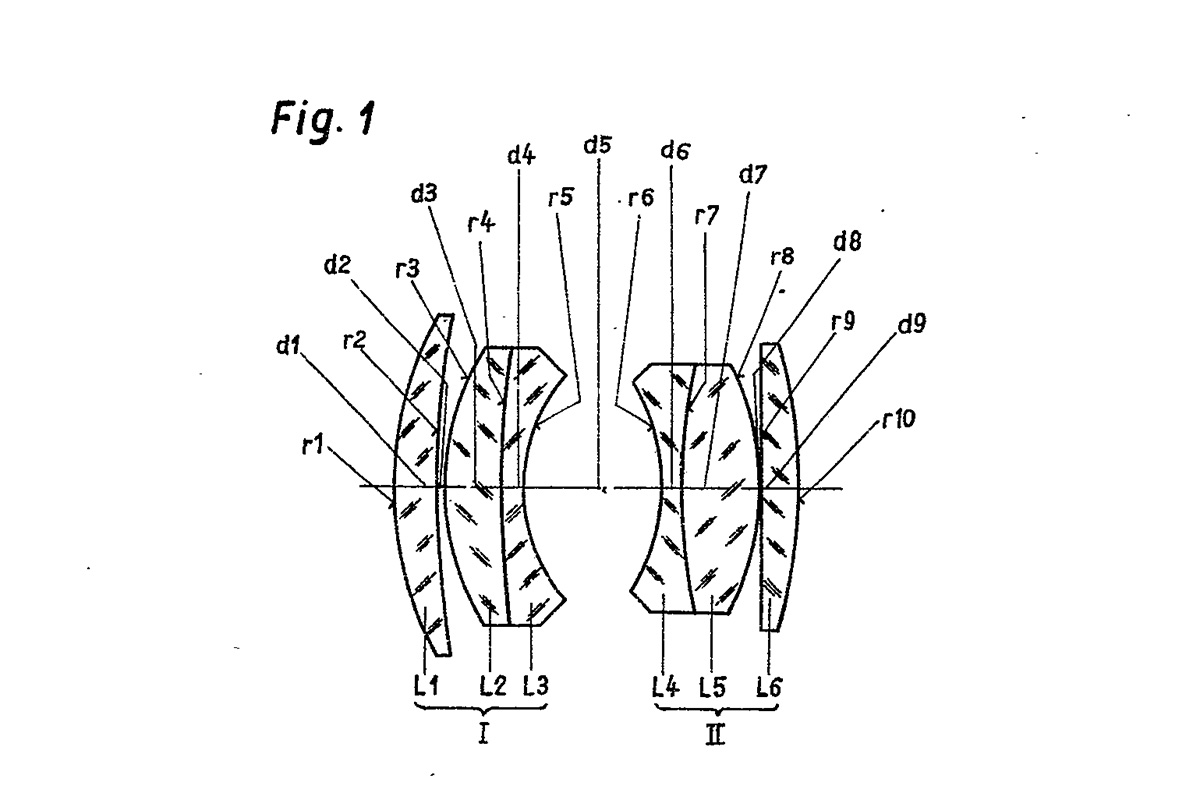| View previous topic :: View next topic |
| Author |
Message |
simple.joy


Joined: 30 May 2022
Posts: 646
|
 Posted: Wed Sep 25, 2024 8:38 am Post subject: What Schneider (Xenon) lenses could these patents show? Posted: Wed Sep 25, 2024 8:38 am Post subject: What Schneider (Xenon) lenses could these patents show? |
 |
|
simple.joy wrote:
I've stumbled upon these Schneider patents from the year 1954 in France:
https://worldwide.espacenet.com/patent/search/family/007723239/publication/FR1106793A?q=FR1106793

and
https://worldwide.espacenet.com/patent/search/family/007722852/publication/FR1102390A?q=FR1102390

Does anyone know what lenses these might be for? I don't understand the French language, but I assume the text mentions that the calculations are made for a lens with 100 mm focal length and a maximum aperture of f/2, but this could very well be just standard procedure in order to make them comparable?
I haven't been able to find a corresponding German patent application yet, but there absolutely could be.
Both of these lenses are mentioned here
http://dioptrique.info/base/f/f8x.HTM
as Xenon "c" so I suppose it's likely that their final form was called Xenon. Perhaps the "c" stands for a c-mount lens? I'm not familiar though with Xenon lenses with 9-element designs like that, so it would be really interesting to know what kind of lenses these are... if they've ever been built.
Some unusual Xenon lenses I can think about (but don't really know concrete details about in terms of construction):
TV-Xenons 50, 75, 100 mm f/2
Xenon (c-mount) 25 and 50 mm f/0.95 (The 50 mm is mentioned on some sites as a 8/6 design)
Xenon (prototype?) 90 mm f/1.4
(Alpa-)Xenon 80 mm f/2
Leitz Xenon 50 mm f/1.5 (Though I'm pretty sure this is a 7/5 design and also older than 1954)
If anyone here can help me out it would be highly appreciated!
_________________
---
Manual lens enthusiast
https://www.flickr.com/photos/simple_joy/ |
|
| Back to top |
|
 |
stevemark

Joined: 29 Apr 2011
Posts: 4087
Location: Switzerland
|
 Posted: Wed Sep 25, 2024 1:51 pm Post subject: Posted: Wed Sep 25, 2024 1:51 pm Post subject: |
 |
|
stevemark wrote:
Retina Curtar Xenon C 5.6/35mm
Retina Longar Xenon C 4/80mm
Front halves could be exchanged, rear half (from a regular Xenon 2/50) was built into the camera.
S
_________________
www.artaphot.ch |
|
| Back to top |
|
 |
simple.joy


Joined: 30 May 2022
Posts: 646
|
 Posted: Wed Sep 25, 2024 2:44 pm Post subject: Posted: Wed Sep 25, 2024 2:44 pm Post subject: |
 |
|
simple.joy wrote:
| stevemark wrote: |
Retina Curtar Xenon C 5.6/35mm
Retina Longar Xenon C 4/80mm
Front halves could be exchanged, rear half (from a regular Xenon 2/50) was built into the camera.
S |
Thanks! So that‘s why they have the same rear element? Interesting… didn‘t think of that possilitiy. Why would they mention f/2 though. Do you think they would actually be faster and are stopped down somewhere in the process?
_________________
---
Manual lens enthusiast
https://www.flickr.com/photos/simple_joy/ |
|
| Back to top |
|
 |
stevemark

Joined: 29 Apr 2011
Posts: 4087
Location: Switzerland
|
 Posted: Wed Sep 25, 2024 6:46 pm Post subject: Posted: Wed Sep 25, 2024 6:46 pm Post subject: |
 |
|
stevemark wrote:
| simple.joy wrote: |
| stevemark wrote: |
Retina Curtar Xenon C 5.6/35mm
Retina Longar Xenon C 4/80mm
Front halves could be exchanged, rear half (from a regular Xenon 2/50) was built into the camera.
S |
Thanks! So that‘s why they have the same rear element? Interesting… didn‘t think of that possilitiy. Why would they mention f/2 though. Do you think they would actually be faster and are stopped down somewhere in the process? |
Original f=50mm is f2! Shown here on a Reflex Retina with the 4/80mm "half lens" in the foreground. I don't own the 5.6/35mm though.
S

EDIT drawing of the original 2/50mm from the same patent:

S
EDIT II:
An early 1939 version where the attachment is placed in front of a Xenar (=Tessar type) lens can be found in US 2'169'130.
1950 patent
_________________
www.artaphot.ch |
|
| Back to top |
|
 |
simple.joy


Joined: 30 May 2022
Posts: 646
|
 Posted: Wed Sep 25, 2024 9:05 pm Post subject: Posted: Wed Sep 25, 2024 9:05 pm Post subject: |
 |
|
simple.joy wrote:
| stevemark wrote: |
| simple.joy wrote: |
| stevemark wrote: |
Retina Curtar Xenon C 5.6/35mm
Retina Longar Xenon C 4/80mm
Front halves could be exchanged, rear half (from a regular Xenon 2/50) was built into the camera.
S |
Thanks! So that‘s why they have the same rear element? Interesting… didn‘t think of that possilitiy. Why would they mention f/2 though. Do you think they would actually be faster and are stopped down somewhere in the process? |
Original f=50mm is f2! Shown here on a Reflex Retina with the 4/80mm "half lens" in the foreground. I don't own the 5.6/35mm though.
S

EDIT drawing of the original 2/50mm from the same patent:

S
EDIT II:
An early 1939 version where the attachment is placed in front of a Xenar (=Tessar type) lens can be found in US 2'169'130.
1950 patent |
Many thanks - that's very helpful in understanding the somewhat unusual design. Of course they have to design around that "fixed rear half-lens". The Xenar + attachment looks even crazier. But ever since I've seen the ISCO T-Kiptagon projection lens system for 70 mm cinema projection, I feel like nothing is impossible to imagine in terms of attachment lenses. Just take a look at it... if you know the size/weight of regular cine projection lenses which are capable of projecting 70 mm film, you're starting to appreciate how crazy it gets:

https://www.in70mm.com/news/2015/t_kiptagon/index.htm
The Retina system looks way more reasonable compared to that. Have you ever adapted one of the Retine Xenons to a modern camera?
_________________
---
Manual lens enthusiast
https://www.flickr.com/photos/simple_joy/ |
|
| Back to top |
|
 |
stevemark

Joined: 29 Apr 2011
Posts: 4087
Location: Switzerland
|
 Posted: Wed Sep 25, 2024 10:01 pm Post subject: Posted: Wed Sep 25, 2024 10:01 pm Post subject: |
 |
|
stevemark wrote:
| simple.joy wrote: |
The Retina system looks way more reasonable compared to that. Have you ever adapted one of the Retine Xenons to a modern camera? |
The only Retina Xenon I have is that one shown in my picture above. Since only the front part can be detached, adapting the entire xenon would be a major task  . No, I haven't tried one on modern digital cameras. . No, I haven't tried one on modern digital cameras.
I do have, however, a few DKL lenses, among them
* Braun Reflex Ultralit 2.8/50mm
* Schneider Retina-Curtagon 4/28mm, Retina-Curtagon 2.8/35mm, and Retina Tele-Xenar 4/135mm
* Rodenstock Retina-Ysarex 2.8/50mm and Rotelar 4/135mm
* Voigtländer Skoparex 3.4/35mm, Septon 2/50mm and Super Dynarex 4/135mm
While the 135mm lenses are nothing to roam about, the Curtagons are quite OK (especially the 35mm which Minolta chose as a starting point for their excellent MC 1.8/35mm). The Ysarex - a pretty rare Tessar sibling - is surprisingly good, too, and the Septon is well known anyway.
S
_________________
www.artaphot.ch |
|
| Back to top |
|
 |
|
|
|
You cannot post new topics in this forum
You cannot reply to topics in this forum
You cannot edit your posts in this forum
You cannot delete your posts in this forum
You cannot vote in polls in this forum
|
